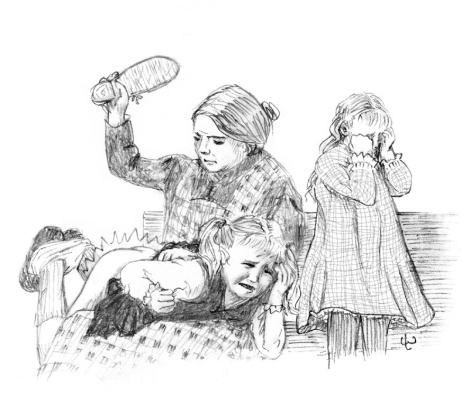
Hogmanay is the Scottish name for the last day of the year, often associated with the celebration of the New Year that lasts until 2 January which is a public holiday.
According to the many existing theories, the word “Hogmanay” could refer to the name of the Scandinavian feast « Hoggo-nott », to the Flemish expression “hoog min dag” that means “great love day”, to the Anglo-Saxon Holy Month “Haleg monath” or to the Gaelic “oge maiden”, new morning, but the most likely source is the French language. “Homme est né” meaning “Man is born” was the last day of the year when presents called “hoguignetes” in Normandy were exchanged.
This tradition is believed to be a heritage from the Vikings who had a strong hold in Scotland: they paid much attention to the passing of shortest days and celebrated the winter solstice. Moreover, Christmas, being a Catholic feast, was banned for round 400 years in this strongly protestant part of the United Kingdom.
Cleaning the house on 31st December, welcoming friends and strangers, giving gifts to colleagues during the first working week are part of the numerous traditions of Hogmanay. The most widespread custom is called the “first-footing” and is supposed to ensure good luck. The first person to enter the house should be a tall dark man as opposed to blond people being after the Vikings’ arrival synonymous of trouble (this custom seems to be paradoxical vis-à-vis the origins of Hogmanay). They initially brought salt, black bun, coal, as well as shortbread and whisky which are the only two gifts left today. An old tradition that has recently been revived is the “saining” which consists, among other things, in sprinkling “magic water” in every room in order to purify the house.
 Torch and bonfire ceremonies in Edinburgh and other Scottish cities are the continuation of the ancient custom at pagan parties hundreds with years ago. When midnight strikes, the tune of “Auld Lang Syne” (meaning "long long ago") rings out. This song is the combination of a poem by Robert Burns and the tune of a traditional folk song that calls for a dance.
Torch and bonfire ceremonies in Edinburgh and other Scottish cities are the continuation of the ancient custom at pagan parties hundreds with years ago. When midnight strikes, the tune of “Auld Lang Syne” (meaning "long long ago") rings out. This song is the combination of a poem by Robert Burns and the tune of a traditional folk song that calls for a dance. In Edinburgh and other big cities, festivals take place in the streets during the night of 1 January. The official organiser of the Hogmanay-festival in the Scots capital is Pete Irvine. Praising and promoting the Scottish culture is one of the mottos of Hogmanay. Famous singers, poets and writers take part in festivities to share their Scottish heritage (Resolution Haiku’s, One Day Resolution Concert, etc.). A traditional event of the Hogmanay is the so-called One O’Clock Run, which gathers hundreds of runners willing to take part in a race of a bit more than 1.5 km. The Loony Dook is another after-midnight competition counting 1000 brave swimmers who dive into the River Forth after a short parade through the capital.
In Edinburgh and other big cities, festivals take place in the streets during the night of 1 January. The official organiser of the Hogmanay-festival in the Scots capital is Pete Irvine. Praising and promoting the Scottish culture is one of the mottos of Hogmanay. Famous singers, poets and writers take part in festivities to share their Scottish heritage (Resolution Haiku’s, One Day Resolution Concert, etc.). A traditional event of the Hogmanay is the so-called One O’Clock Run, which gathers hundreds of runners willing to take part in a race of a bit more than 1.5 km. The Loony Dook is another after-midnight competition counting 1000 brave swimmers who dive into the River Forth after a short parade through the capital.Most of the events are financed by the Scottish Government’s Edinburgh Festivals Expo Fund to the extent of 190,000 £ (226 000 €). On the whole, 6 £ million (more than 7 € million) are granted to the 12 Edinburgh Festivals involving Scottish participants, which then have to share the sum between themselves. In 2009, the Hogmanay-festival yielded more than 29 € million to Scotland.
Even though the local traditions are limited to Scotland, the festivities in Edinburgh attract many tourists of all countries. Join them next year and let yourself be carried away by this cultural whirl!
Cécile Leclercq and Vinciane Pirard























